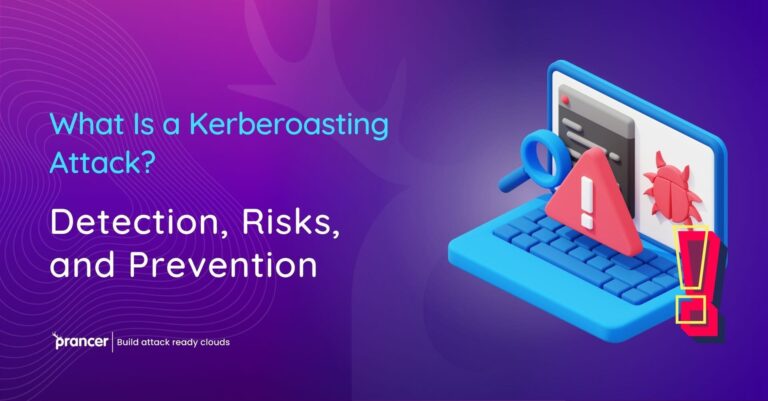

The software applications protection is not a must; it’s a never-ending chase in the complex world of cyber security. This pursuit is at the heart of our topic: With the threat environment continuously changing, protecting applications against cyber-attacks is of the essence. Application security in cybersecurity refers to various efforts and technologies aimed at securing software from different threats and vulnerabilities. One of the key techniques among these tools is “Automated Penetration Testing”, which offers an efficient and much detailed method to detect vulnerabilities. The blog examines the significance of application security for cybersecurity and highlights Prancer’s novel methodologies and perspectives towards software protection.
Application Security in the Cloud Environment vis-à-vis Cybersecurity. The significance of securing applications in this realm cannot be overestimated as organizations more and more go for cloud services. Cloud-Based Application Security Must Protect Against Multiple Threat Vectors and Maintain Compliance.
1- Proactive Threat Identification: In cybersecurity, application security requires early detection of vulnerabilities. For example, automated penetration testing tools undergo cyber attacks simulation that identifies possible weaknesses that malicious actors would exploit.
2- Regular Updates and Patch Management: The software industry changes from time to time, and new threats arise. The former deals with application security and the needed updates and constant patch management to prevent exposed applications against known threats.
3- Robust Authentication and Authorization Protocols: Application security in cyber security entails that only authorized users can access the applications. Multi-factor Authentication and stronger authorization can vastly augment security.
4- Secure Coding Practices: The development process is at the core of application security in cybersecurity. Following secure coding practices right from the beginning can also avoid a lot of vulnerabilities getting introduced into the software.
5- Comprehensive Security Policies and Training: Information security in cybersecurity is application security and a well-informed team of professionals is a critical defense line. Ongoing, security best-practice training and establishing policies can give staff members a role in improving the operational security.
Prancer is one of the pioneers in this field and ensures that application security becomes the focus on cybersecurity. Prancer assists organizations in discovering and removing probable security threats in their software apps, and combines automated penetration testing along with other sophisticated protection elements. We are equipped to present customized security practices that fit each application’s particular injection, thus providing both compliance and safeguarding in the expanding threat environment.
Automated penetration testing has transformed the approach to application security in cybersecurity. Prancer makes the testing of software application security posture a complete and automated process. This not only takes time and resources but also gives them a clearer understanding of the vulnerability under evaluation.
Protecting software applications is an ongoing and vital chore in the complicated world of cybersecurity. What makes this approach important is that it focuses on automated penetration testing, which allows uncovering vulnerabilities in a more efficient way as part of the overall security strategy. Prancer’s innovative approaches help to improve application security, providing fine-tuned solutions that combine advanced automation testing with state of the art protections. This approach is a major paradigm shift in applying security to applications by increasing the effectiveness and efficiency of cybersecurity.
The Evolving Landscape of Cybersecurity with the Consideration to the Automated Penetration Testing
However, cybersecurity is a fast-evolving field that strives to address and defeat the increasingly complex cyber attacks. In this dynamic environment, the automated penetration testing is a very vital tool. It provides a systematic way of detecting the weaknesses in software applications. In contrast to the conventional approaches, automated penetration testing is able to quickly scan and test vast amounts of code generating an elaborate report on potential places where a security breach can take place. This ability is very essential in such an environment, where new threats are rapidly rising every day and thus the security strategy should be always anticipatory and dynamic.
Automated Penetration Testing: Bridging Efficiency and Effectiveness
The efficiency of the automated penetration testing is one of the most prominent benefits. Manual penetration testing is very slow and also out of date with the modern software development life cycles. However, automated tools process the hundreds or even thousands of lines of code in a matter of minutes and immediately detect the known vulnerabilities as well as offer suggestions for remediation. This efficiency does not compromise at all on the effectiveness. Advanced automated penetration testing tools are usually designed with powerful algorithms that act like the real cyber attackers for a true representation of an application’s security position.
The Implementation of Application Security During the Cloud Age
More specifically, the move towards cloud computing has underlined the importance of strong application security. Automated penetration testing is an inevitable tool considering that the cloud environments have specific challenges and vulnerabilities. It guarantees the rigorous testing and security of the cloud-deployed applications against multiple threats. This is especially important as cloud-based applications process the sensitive data and adhere to different regulatory specifications.
Combining Automated Penetration Testing with many Wide-Ranging Security Measures
However, even though an automated penetration testing is a very potent tool it should be used as part of the overall security policy. This encompasses continuous update and patch management, stringent authentication protocols and authorization practices as well as secured coding procedures security policy training. These practices help to identify the vulnerabilities but the synergy of these test tools, techniques and procedures helps a lot in making it possible to develop a very robust application environment.
Automated Penetration Testing and its Significance in the Proactive Threat Identification
A proactive approach to the threat identification forms the basis of efficient cybersecurity. In this regard, automated penetration testing is very essential as it seeks to imitate the cyber-attacks and detect any vulnerabilities before they are breached by malicious actors. The proactive strategy is much more productive than the reactive methods, which usually occur following an attack. Identifying and addressing the vulnerabilities early on is always a great way to decrease the organizational risk.
Custom Security Solutions and Automated Penetration Testing are significant in the field of cybersecurity.
All applications are very distinct in their own way when it comes to the requirements and also vulnerabilities. This is the area where automated penetration testing excels by providing an opportunity to specify the testing processes for every application. This personalization makes certain that the testing is not just comprehensive but also responsive to those specific security hazards which an application may be very prone to.
Automated penetration testing promises a better future in the field of cybersecurity.
In the future, automated penetration testing is likely to assume a more central position in the cybersecurity. Since cyber threats change, we also have to find new ways of fighting them. Automated testing provides the scalability, efficiency and also effectiveness necessary to match pace with the changing software development as well as new cyber threats It symbolizes a major change in attitude toward the application security where we are moving towards more automatic, proactive and adaptive system.
Prancer’s Automated Penetration Testing Approach
As a leader in the application security, Prancer understood how important automated penetration testing was. In an effort to combine this technique with the other sophisticated security features, Prancer provides a well-rounded solution that not only detects vulnerabilities but also equips its users with necessary tools and approaches for their mitigation. With this holistic approach, the application security is not just a checkbox but an intrinsic element of the organization’s cybersecurity profile.
Automatic penetration testing is not only an instrument but also the epitome of application security in cybersecurity exclusively. Being able to accurately detect vulnerabilities in a timely manner, it is an very essential element of any sound security system. As we traverse the digital landscape, automated penetration testing will remain as one of the cybersecurity’s building blocks in defending software applications.
Conclusion
Application security is an evolving area of cybersecurity, with new threats emerging regularly. To be proactive for these challenges one must employ a strategic plan fully articulated in terms of how best to build innovative tools and practices required. Prancer has led the upsurge because of its specialization in auto-penetration testing as well as strong application security practices. Adherence to these critical insights, and exploitation of Prancer’s unique services enables organizations to achieve the level of software application security that denies the numerous cyber threats synonymous with today’s world.
